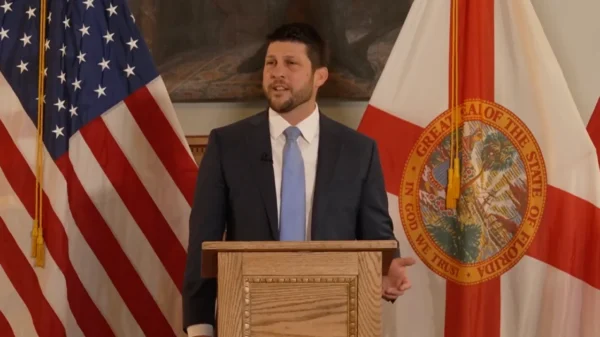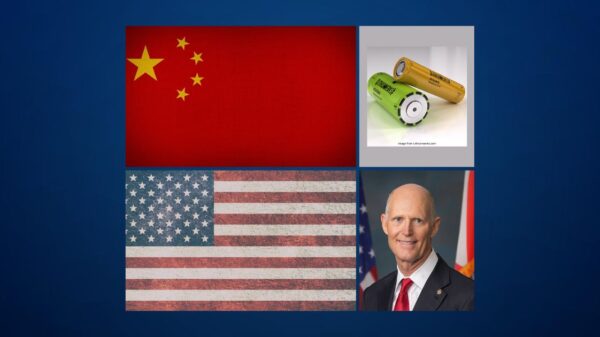U.S. Sen. Marco Rubio, R-Fla., recently sent a letter to U.S. Secretary of Defense Lloyd Austin regarding the threat a forced transition to an all-EV fleet poses to our military readiness.
According to Rubio’s office, the letter “highlights the instability of the EV supply chain, the problematic reliance on China for EV battery materials, and the high allocation of taxpayer dollars” and pointed to comments from another member of the Cabinet.
“U.S. Secretary of Energy Jennifer Granholm recently suggested that the U.S. military should adopt an all-electric, non-tactical vehicle fleet by 2030. This continues the Biden Administration’s pattern of prioritizing green ideology over military readiness,” Rubio’s office insisted.
The letter is below.
Dear Secretary Austin:
I write out of concern over recent comments made by U.S. Department of Energy Secretary Jennifer Granholm about the importance of electrifying the U.S. Department of Defense (DoD)’s non-tactical vehicle fleet by 2030. Unfortunately, Secretary Granholm’s comments are not novel in the Biden Administration, and are just the latest in a stream of misguided efforts to prioritize progressive and unrealistic green energy policies over bolstering the readiness of the U.S. military at a time of heightened global instability and an increasingly aggressive Chinese Communist Party (CCP).
Last year, President Biden stated that “I’m going to start the process where every vehicle in the United States military — every vehicle is going to be climate friendly,” adding that the American taxpayer is “spending billions of dollars to do it,” yet this will be a challenge with an increasingly unstable supply chain. The administration praised the Inflation Reduction Act as redefining American leadership in advancing EVs. However, the law provides billions of dollars in taxpayer-funded subsidies to the CCP. China is on track to control one third of the world’s lithium supply by 2025, a key material used in EV production. This is why I have consistently demanded that the Biden Administration certify that no taxpayer subsidies would end up in the hands of the CCP. Further, a majority of the world’s cobalt, another essential material in lithium battery production, is mined by trafficked child slaves in the Democratic Republic of the Congo. Until we can develop mineral resources from mines in the U.S., and produce batteries domestically, any electric vehicle buildout should remain unthinkable.
On an overwhelmingly bipartisan basis, my colleagues agree that investment in EVs for the U.S. military makes us less safe, and taxpayer dollars are better spent elsewhere. Under a Democrat controlled House and Senate, the James M. Inhofe National Defense Authorization Act for Fiscal Year 2023 included a limitation on replacing DoD’s non-tactical vehicle fleet with EVs until, among other conditions, DoD could identify the costs, security risks, and supply chain concerns of such a move. Given our reliance on China for electric batteries, President Biden’s demands for “every vehicle” in the U.S. military to be climate friendly only serves to ramp up our dependence on the CCP, a regime that seeks to usurp the U.S. as a global economic, technological, and political leader.
It is no secret that Xi Jinping has set a goal of 2027 for the People’s Liberation Army to invade Taiwan, an event, if not deterred, would set off a global economic crisis and disrupt critical supply chains. Spending the next seven years trying to electrify the DoD’s non-tactical vehicle fleet to meet an arbitrary, unnecessary timeline of 2030 leaves our military distracted, while China continues to upend the rule of law and prepare for war. Instead, our DoD should be addressing the U.S. military’s recruiting crisis, backfilling munitions stockpiles, and revitalizing the U.S. industrial base – all efforts that send a strong signal to the CCP.
Given these concerns, I request answer to the following:
How much does the DoD assess it will cost to convert the U.S. military’s entire non- tactical vehicle fleet to electric vehicles? In your analysis, please include costs for charging stations.
Does DoD plan to reimburse any municipal and cooperative electric utilities for any grid buildouts to accommodate increased electricity demand from electric vehicles?
Has the DoD assessed the reliance on Chinese materials for parts that would be used in such vehicles?
Many electric vehicles are significantly heavier than traditional gas vehicles. What consideration has DoD given to additional weight strain on infrastructure at installations that will come with heavier vehicles?
Does DoD currently have the charging infrastructure globally to support the deployment of non-tactical vehicles at installations around the world?
What is the DoD’s analysis of alternative sourcing for raw materials, such as lithium, that are critical for EVs?
What analysis has the DoD conducted to compare the usage of EVs with traditional military non-tactical vehicles?
Thank you for your attention to this important matter.























